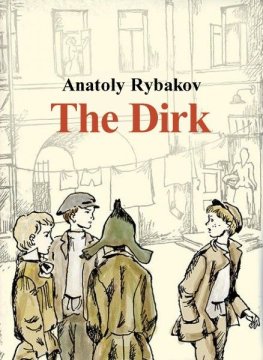AN ORDERLY MAN
DIRK BOGARDE

For
E. L. L. Forwood
Contents
I am an orderly man. I say this with no sense of false modesty, or of conceit. It is a simple statement of fact. Thats all. Being orderly, as a matter of fact, can be excessively tiresome and it often irritates me greatly, but I cannot pull away. I sometimes think that I would far prefer to live slumped in some attic amidst a litter of junk, dirty underclothing, greasy pots and pans, paints and canvases strewn about everywhere, an on-the-point-of-being-discarded mistress weeping dejectedly on the stairs, fungus on the walls, and an enormous overdraft at the bank or, better still, absolutely no money at all. Unvarnished, music-less, Puccini.
But it just wouldnt work for me.
I have to live in an orderly manner; Id tidy up the attic in a flash, scrub the pots and pans, stack the canvases, exterminate the fungus, label the paints and send the mistress back to her mother. Or husband. And keep what money I had, as frugally as a miser, in a sock beneath my mattress. Orderly is what I am. You only have to see my plate at table, when I have dealt with asparagus, kippers or an artichoke, to know this: neat bundles of chewed stalks; bones and skin precisely laid aside in immaculate little blocks; tidy piles of leaves stacked as carefully as Dresden saucers.
All this is done quite unconsciously. I am not aware that I discard my rubbish in so fastidious, not to say elegant, a fashion. It simply happens. There they are. No scattered heaps of detritus or masticated vegetable matter. Neat, tidy, organised packets on a pristine platter. I often wonder, why? I look with quiet astonishment at my contribution to the dustbins.
What instinct makes me behave in this extraordinary fashion? Is it something which I have inherited from my father: a man who was always correct, contained, persistent and fully planned all his life? Or is it some hideous subconscious fault which a psychiatrist would hold against me as a sign of some monstrous flaw in my otherwise apparently serene make-up. God knows. But it is always there, and it has ruled my life from my earliest days. Precision, order, plan.
* * *
I live, and I must live, according to a pattern which I have made for myself, and fill it in with great care. I take grave risks with it, of course: bend it, turn it, sometimes even turn it quite over, re-arrange it, re-design it, but it is always within its frame, just as a stained-glass window is bounded by the strong pillars of its stone arch.
If a risk seems to me to be too dangerous (that is one which might shatter the whole amazing fabric itself), then I swiftly modify the risk and find another way to go about the alteration, seeking a less satisfying, less exciting, but far safer way of placing the bright fragments of life. No Nicholson or Sutherland am I: rather a Burne-Jones or Millais. In short, I am not abstract, I am realist. I think.
Often pinched by doubt.
But, after all, one cannot, at sixty-two, look back down the corridor of ones life and not have some doubts about the journey one has made. The doors which one opened are now all closed. The doors one did not dare to open remain shut. The corridor is dark; only ahead is lighter. So one turns and proceeds in that direction. To go back is madness. To turn left or right, at this stage, is both exhausting and dangerous.
However, there was not the least shadow of a doubt in my mind when we crunched gently up the rutted track towards this house one golden November day twelve years ago. Not the very slightest. From the moment that we turned off the narrow road up the lane between giant olive trees and wound up the hill among spiky amber grasses, jutting rocky outcrops, crimson brambles, sparkling little springs of crystal water in verdant bog, all under a sky the colour of Faberges blue enamel, I knew that the track was the right track and that my pattern was intact. And that the house, framed in its saffron vine and a large orange and lemon tree, was just about to fit into that pattern as smoothly and effortlessly as a foot into a well-worn slipper. After months of trailing about France, and before that most of Italy, I knew that I had found my ideal without once having set a toe across its threshold. It was instinctively, physically, and most important, spiritually, the exact fragment which I needed to complete my orderly pattern. There it was, glowing brightly in the sun. Waiting for me to embrace it and fit it into my life. Which I did.
Fitting myself into it proved, on the other hand, to be quite another matter. Crossing the threshold that morning for the very first time, I discovered that the ground floor consisted of three separate quarters. A kitchen with a vast canopied fireplace, a stone sink in one corner and a set of dusty sequinned drums and a music stand set in the centre of the tiled floor. Next door, down a couple of steps, two lofty stables, one for sheep, one for carts.
On the second floor, arrived at by a curving slate staircase, a sitting-room with an upright piano and a photograph of Che Guevara; beyond it three small bedrooms and a pitch dark bathroom. On the same level, just beside Mr Guevara, a door led up two steps into a sort of black pit, which had a stove and a sink and could have held two people in a grave emergency, and one in extreme discomfort. Above all this, running the length of the entire house, was a vast room which had recently been the hay loft. Thats all. I admired the circular windows in the hay loft and the view from them of the massed olives below, and the sea shining some way off like a sheet of silver paper. I was instantly in love.
If the house did not quite contain the accommodation which I knew I should require for this permanent abode, it did contain the space. In my mind I rapidly decided that the ground floor should be opened up to form one enormous fifty-foot room, retaining the kitchen part, arching through the separating stable walls. The ceilings were all, most fortunately, on the same level; the floors rather attractively, I thought, on differing ones. Where the stable door was, presently swinging in the gentle autumn wind, I would have a window made. I should retain the canopied fireplace, convert the hay loft, put in an extra bathroom, and come to terms with the black pit at some later date. The house had limitless possibilities, only my bank balance was restricting. So I must go carefully at the start, and with the invaluable help of Mr Loschetter, my architect, and a rough set of scribbled sketches in his notebook, the ideas conceived between us all rapidly became almost-possibilities. Almost fact indeed. Loschetter nodded sagely and assured me that, as long as I did not desire a swimming-pool, marble stairs, plate-glass windows, wrought iron, and central heating throughout, it need not cost me a fortune. I asked only that the house be made large enough within its walls to provide the accommodation I required and that it should, above all else, retain the character which five hundred years had bestowed upon it. The arches which we would make through the downstairs walls must be irregular, the floors not completely level, the windows must be in sympathy with the ones which already existed, and the plaster must have the texture of centuries instantly imposed upon it. He was suddenly relieved and almost affable. He later confessed that he had heard that I was in the movies and expected to have to gut the house, build a sauna and a swimming-pool, and string Venetian lanterns from every ceiling. When I asked him what he would have done had I insisted on these bits of kitsch, he said sharply that he would have quitted the job.









